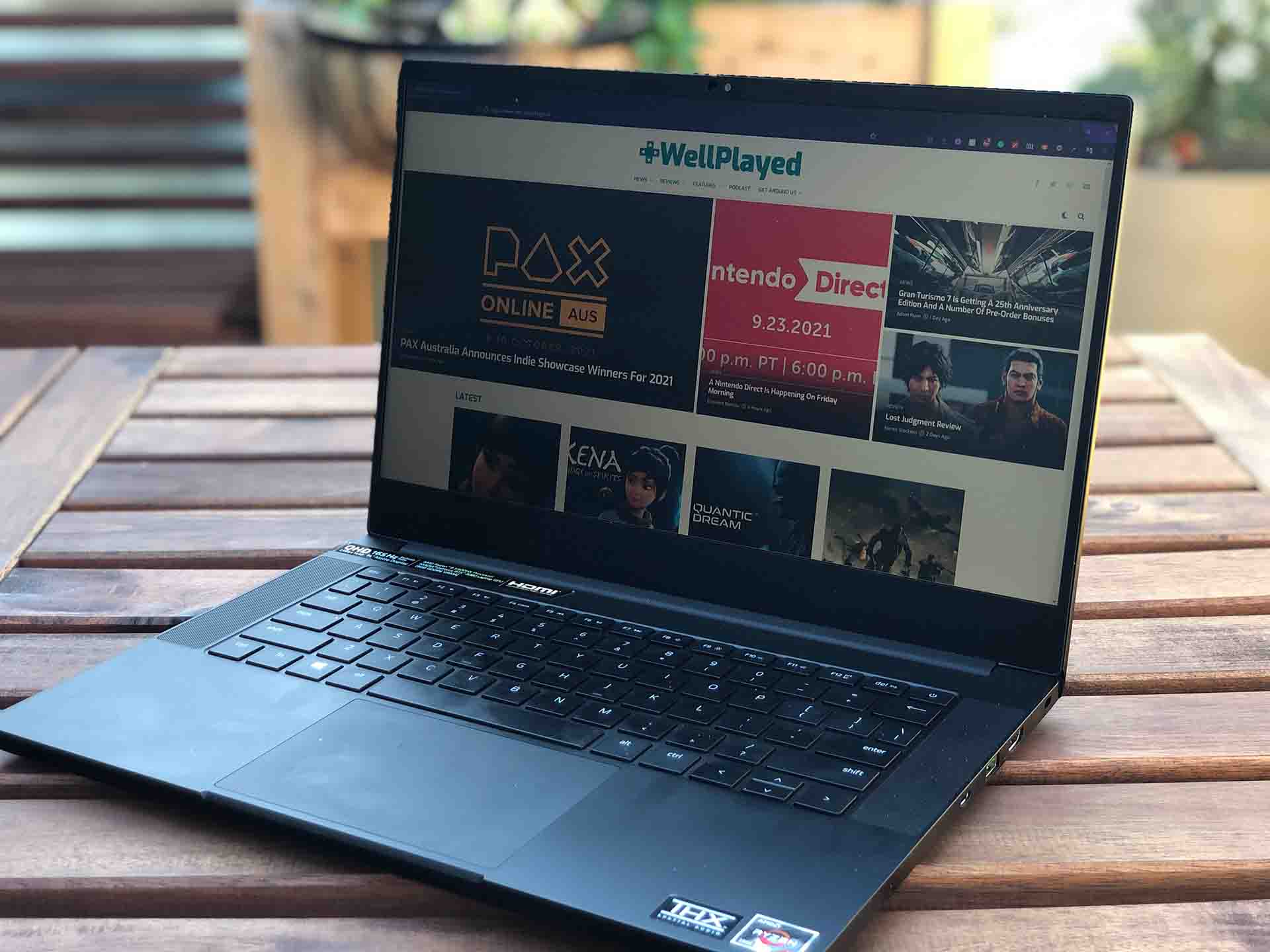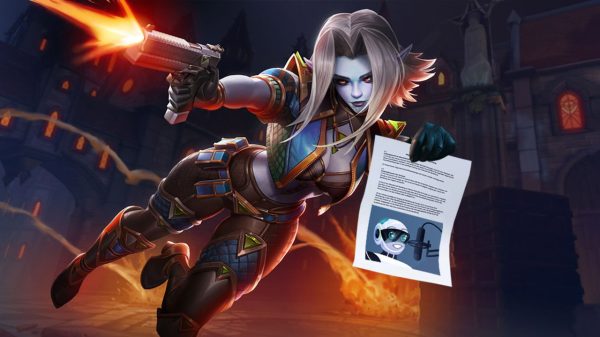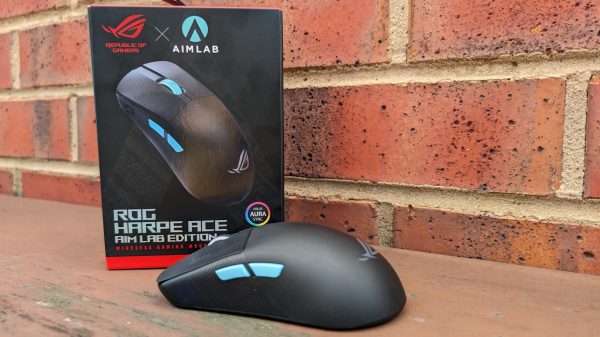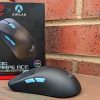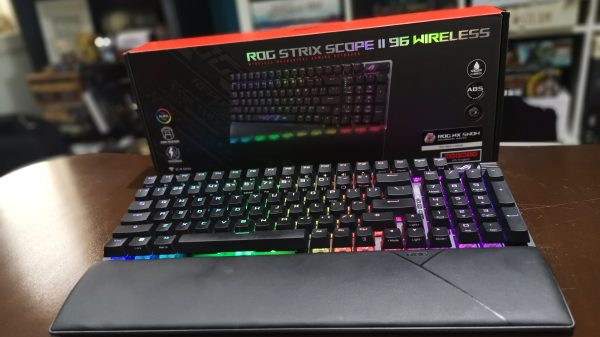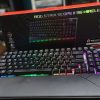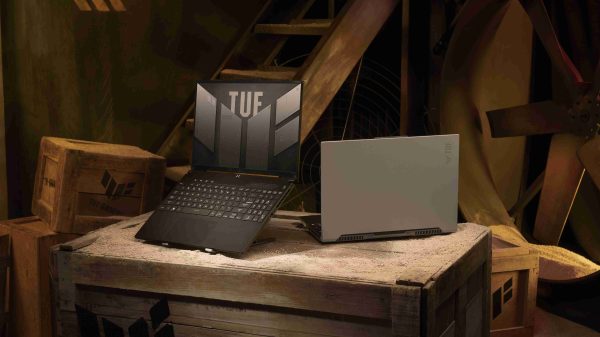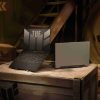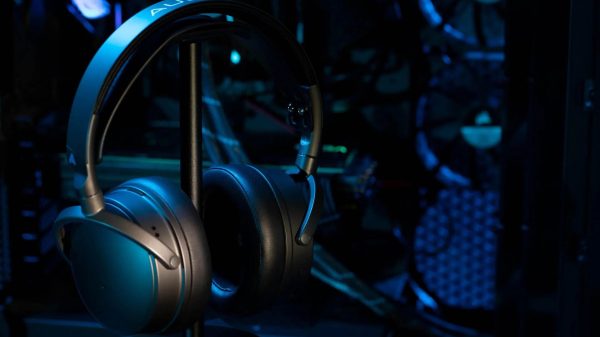Gaming on laptops has always been a bit of a weird notion to me. On one hand, I understand the desire to have the capability to play PC games while not compromising on portability. On the other hand, laptops bring their own issues when it comes to pricing, upgradability, and thermals. It’s a bit of a double-edged sword, but it’s difficult to have the best of both worlds without any compromises. The last time I did any sort of gaming on a laptop was back in 2012 when I played Half-Life 2, on a MacBook Pro. Yep…I was that moron that gamed on a Mac. However, the amount of engineering work put into laptops has always intrigued me and so when we were given the opportunity to review the latest Razer Blade 14 by the lovely people at Razer, I absolutely jumped at the opportunity. I went in expecting a decent experience, but I wasn’t expecting to be as impressed as I was. Though it certainly can run quite warm, the Razer Blade 14 is nevertheless a beast in its own way.
To start things out, we shall talk about what to expect out of the box. Laptops from various vendors/OEMs are often laden with proprietary bloatware software that often makes the brand new system that you just bought always feel kind of sluggish on startup. While the Blade 14 isn’t the exception to this rule, the more recent work that has gone into Razer’s Synapse software has helped make that one preinstalled piece of software not feel like unnecessary bloat on startup. Naturally, the software isn’t mandatory by any sense and can actually be uninstalled if you so wish, but there are definitely some nice features that are provided to people who do decide on keeping the software installed. Things like lighting control and macro control are all offered to users who keep Razer Synapse installed so I do actually recommend at least giving the program a go. Outside of Synapse, the only other bloatware that is installed out of the box is the standard Windows 10 bloatware (Microsoft, you should be ashamed of yourselves).
Given that the last laptop I used was a MacBook Pro, I have a pretty high standard for how a laptop should feel. Egregious design flaws aside, the MacBook Pro feels premium, almost to the point that you ignore paying an exorbitant amount for a something that in reality underperforms in a few areas (well, that was until the M1 MacBooks released, at least). I was quite surprised to see that the Blade 14 had that premium feel to it. The chassis feels solid and robust. It doesn’t look or feel cheap, something a lot of gaming laptops are guilty of. In terms of I/O, the Blade 14 is pretty decent too, featuring the following:
- 2x USB 3.2 (Type A)
- 2x USB 3.2 (Type C)
- 1x HDMI 2.1 (supports up to 4K 120Hz)
- 1x 3.5mm port
- 1x power/charging port
This laptop’s I/O kind of has something for everyone. It’s also worth noting that the laptop features Bluetooth connectivity (naturally, it’s 2021 after all) so even if you were to bring extra peripherals to the table, you could make use of the in-built Bluetooth and conserve those I/O ports for things that can only use them. Two USB-C ports is fantastic as more devices are making use of that high-speed port.
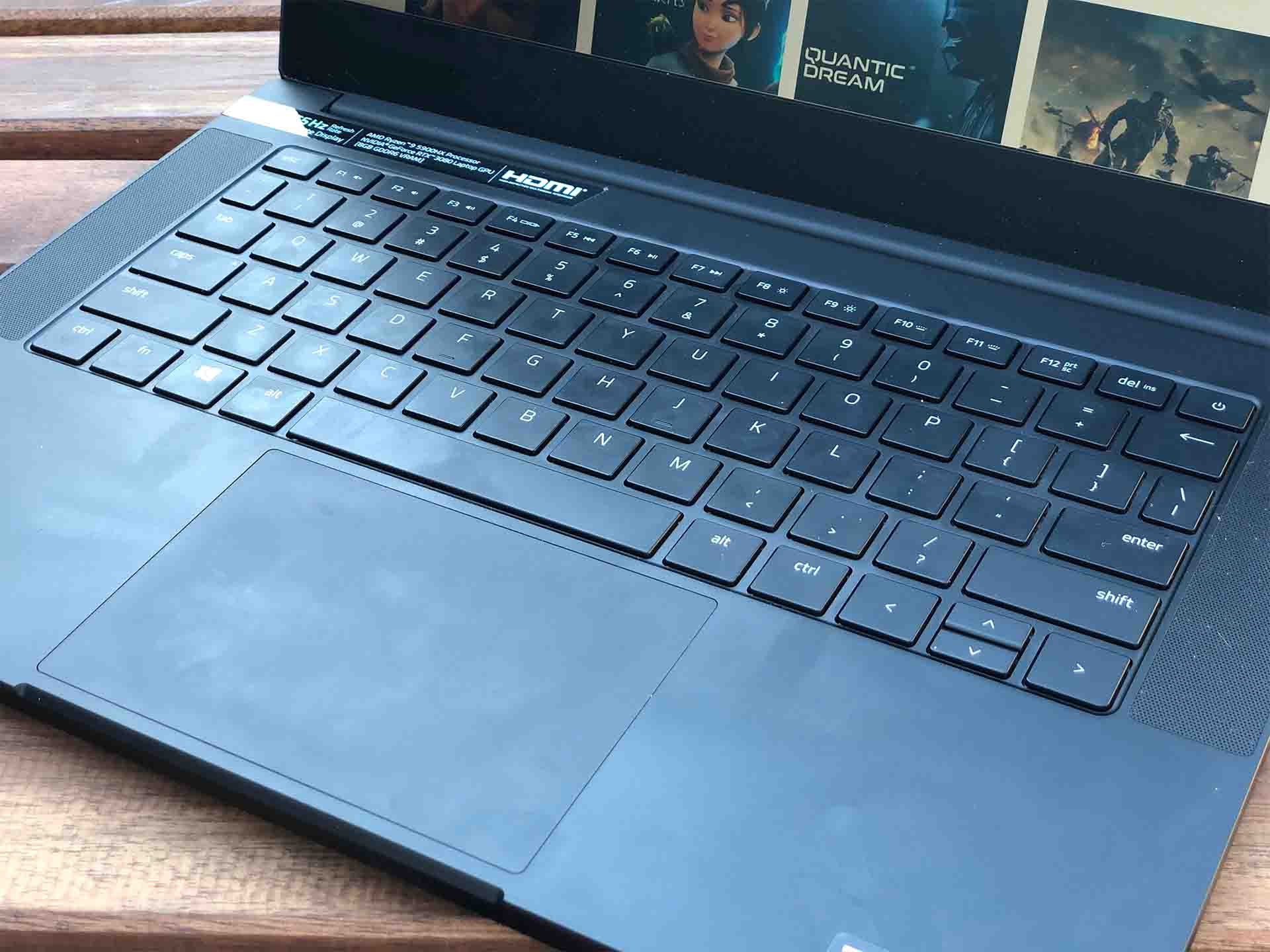
In terms of general usability, I found myself quite surprised with the Blade 14. The track pad is a nice size and it actually has some decent palm rejection (meaning it won’t react if you move your palm onto it) and all your most important keys on the keyboard are there. On top of that, the keyboard makes use of Razer’s HyperShift feature, which are basically like macros, where holding the “fn” key allows for additional functions to be used on various keys. This also allows for F1–F12 to have primary functions, whether it be for media keys, backlighting and/or volume keys. In classic Razer fashion, the keyboard features full per-key illumination so if you ever wanted a laptop with obnoxiously bright, coloured keyboard lighting, this is the one for you.
With the basics out of the way, let’s have a look at the specs that this laptop can be outfitted with. While there are technically three different configurations for the Blade 14, the only differences to be found are in the GPU and the monitor. The configurations you can have are as follows:
- Price: A$3099
- CPU: Ryzen 9 5900HX 8 cores/16 threads @ 3.3GHz base (4.6GHz boost)
- GPU: NVIDIA GeForce RTX 3060 (6GB GDDR6)
- Memory: 16GB DDR4 3200MHz (fixed onboard)
- Storage: 1TB SSD (M.2 NVMe PCIe 3.0)
- Display: 14-inch, 1920×1080 144Hz, IPS display
- Connectivity: Wi-Fi 6E (802.11ax), Bluetooth® 5.2
- Power: Built-in 61.6WHr lithium-ion polymer battery, 230W power adapter
- Audio: Built-in speakers, built-in array microphone
- Dimensions: 16.8mm x 220mm x 319.7mm
- Weight: 1.78kgs
- Price: A$3999/A$4999 (depending on GPU)
- CPU: Ryzen 9 5900HX 8 cores/16 threads @ 3.3GHz base (4.6GHz boost)
- GPU: NVIDIA GeForce RTX 3070 (8GB GDDR6)/NVIDIA GeForce RTX 3080 (8GB GDDR6)
- Memory: 16GB DDR4 3200MHz (fixed onboard)
- Storage: 1TB SSD (M.2 NVMe PCIe 3.0)
- Display: 14-inch, 2560×1440 165Hz, IPS display
- Connectivity: Wi-Fi 6E (802.11ax), Bluetooth® 5.2
- Power: Built-in 61.6WHr lithium-ion polymer battery, 230W power adapter
- Audio: Built-in speakers, built-in array microphone
- Dimensions: 16.8mm x 220mm x 319.7mm
- Weight: 1.78kgs
That’s actually quite a lot of computing power to pack into such a small, sturdy frame. When I first read the spec sheet for the model sent to me (the 3080 model), I was actually quite skeptical on how it would handle in a proper test. I personally don’t like to stress components out with synthetic benchmarks like AIDA64 or FurMark, just because I find that they don’t paint the whole picture. They’re informative, sure, but they aren’t realistic compared to what most people actually use their PCs/laptops for. To put it bluntly, this thing kills it for gaming. I stress tested this thing with Forza Horizon 4, DOOM Eternal (for a RTX benchmark), and Civilization VI (for a CPU-oriented gaming stress test), all at a resolution of 2560×1440. I ran each benchmark 100 times, which was a bit excessive but I wanted to make sure that the results left nothing to chance. Let’s take a look at the results:
DOOM Eternal RTX On
Forza Horizon 4 Max Settings
Civilization VI AI Benchmark
Looking at the results, the Blade 14 is one damn consistent machine. It has a lot of power to leverage. Not only are the performance numbers for these games impressive, but the fact that it can achieve these numbers while also maintaining decent temperatures (for a laptop of its size). In saying that, however, it does still get quite warm, and I’d imagine in situations where the ambient temperature is high, things could get concerning. In my general gameplay, my CPU temps were around 70C and my GPU temps were around 74C. This is a lot of breathing room for the CPU temps, as AMD CPUs only see issues towards 100C, where crashing occurs. For the GPU, however, 74C is still decent, but you only have an extra 10 degrees of breathing room before thermal throttling occurs, as NVIDIA’s default throttle temperature is 84C.
Where the issues for thermals lie, however, actually have to do with the chassis. Due to its anodised aluminium chassis, a lot of heat is dissipated through the body itself. Normally, this is fine, but when you are gaming and using the keyboard to control your characters, things can get uncomfortably warm, especially under your palm. The area around the WASD keys isn’t too bad, as the thin design of the laptop on top of the blower-style coolers that accompany it allows for cool air to actually blow through the keyboard itself, so your fingers should mostly be okay during gameplay. However, I do recommend having a small keyboard to use while you play games on the Blade 14 — perhaps something like the Razer BlackWidow V3 HyperSpeed Mini *wink wink*.
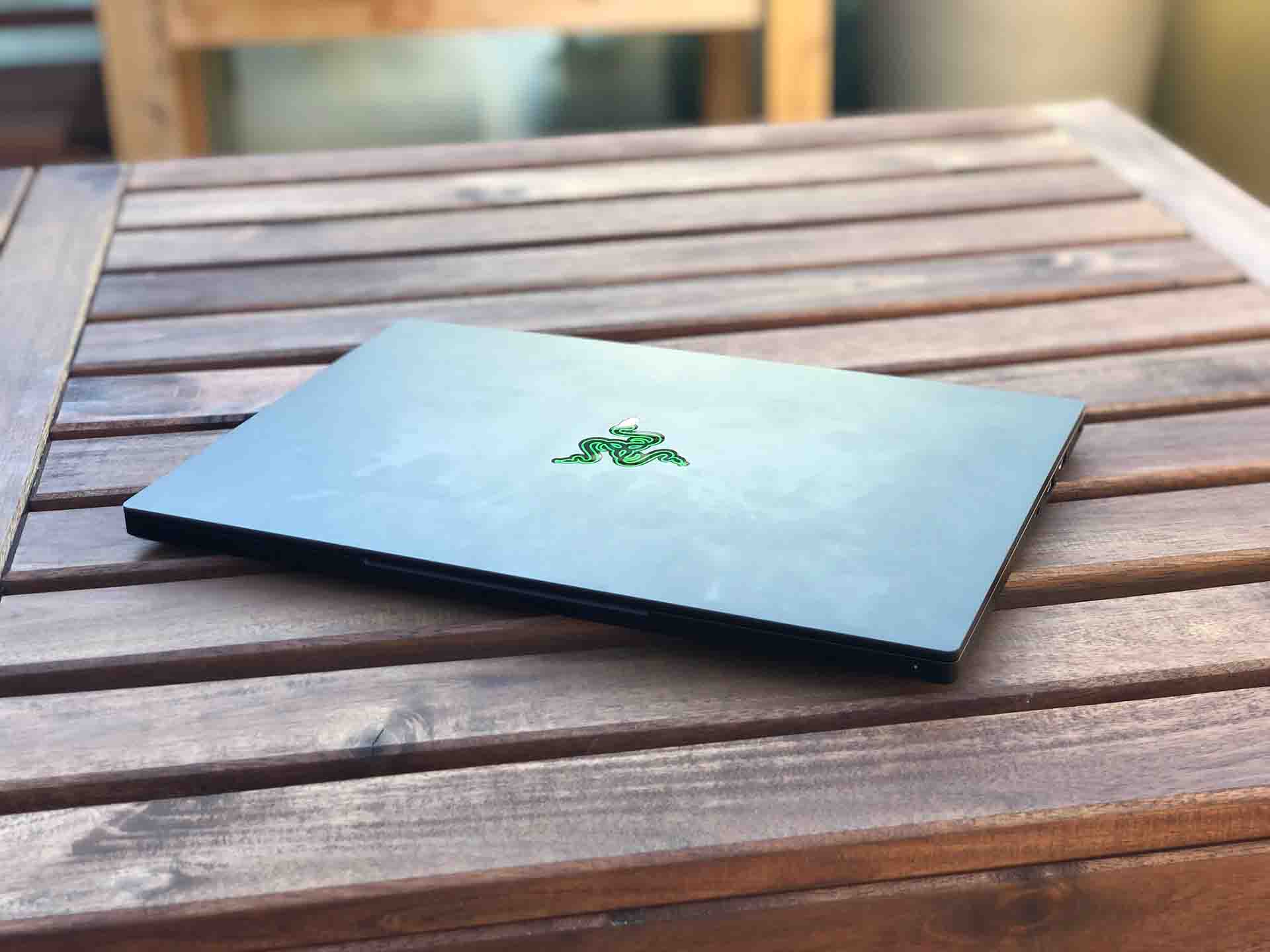
In terms of battery life, the Blade 14 is solid, but nothing exceptional. I could get around four [4] hours of battery life through general use. Do remember that I was using the model with more power hungry components, I’d imagine the 1080p model would last a little longer because the lower resolution and refresh rate would allow for near idle power consumption to be notably lower. When doing more demanding tasks, like editing the WellPlayed DLC Podcast, video editing, photo editing and animating, the Blade 14 handled really well and I was able to get through most of the aforementioned tasks on one charge cycle. There were a few exceptions, but no laptop would have been able to reasonably get through those tasks on one cycle. While this laptop is more positioned as a gaming laptop, for your standard content creator, it still offers an incredible amount of versatility and productive capabilities.
Where the Blade 14 kind of falters is its noise. It comes as no surprise to hear that a powerful laptop is noisy. Additionally, given its incredibly thin stature, this laptop had no hope of remaining quiet while maintaining moderate temperatures for its components. Still, unless you have noise cancelling headphones on, there is a good chance that the noise of the fans trying their best to make sure the laptop doesn’t catch on fire will go right through whatever you are listening to. Thankfully, I’m used to tuning out singular frequencies due to years of tinnitus, so I can actually work with that, but I can completely understand people that aren’t able/willing to work with the amount of noise that the Blade 14 can produce.
On to the actual screen. Simply put, this IPS panel is gorgeous. I’m used to my ultrawide’s VA panel which has some pretty solid colour, but the Blade 14’s screen puts it to shame. I noticed no ghosting, the screen was incredibly snappy and responsive and its colour depth is great. Thankfully, you can control the colour balance if you prefer less or more saturation. I honestly found it hard to adjust back to my normal monitor after extended use with the Blade 14’s screen, it’s just so damn nice. In addition to the nice screen, the webcam included on the Blade 14 is pretty solid and will perfectly suit the average person’s use-case. The microphone is solid enough too, for a laptop microphone, but I wouldn’t use it for anything outside of like a video call with family or something as it allows for too much background noise to spill into the mic (such is the nature of these microphones).
Final Thoughts
Razer has now been able to offer really great laptop experience with an incredibly small form factor with the Razer Blade 14. Its dimensions allow for it to have some great levels of portability, while its cooling capacity allows for the powerful hardware found under the hood to work well enough. The GPU temperatures can get a little concerning if you live and game in a warmer climate, as ambient temperatures can make a massive difference in cooling efficiency. It does make a noticeable amount of noise, but that’s the compromise for having such powerful hardware inside a laptop. Its battery life is solid, albeit unexceptional, its keyboard is comfortable to use and its palm rejection works incredibly well. The screen is incredibly good and allows for this laptop to serve a number of purposes, whether it be for content creation or just gaming.
Review unit supplied by the manufacturer
Click here for information on WellPlayed’s review policy and ethics




Jordan lives and breathes Dark Souls, even though his favourite game is Bloodborne. He takes pride in bashing his face on walls and praising the sun. Hailing from the land of tacos, he is the token minority for WellPlayed.





